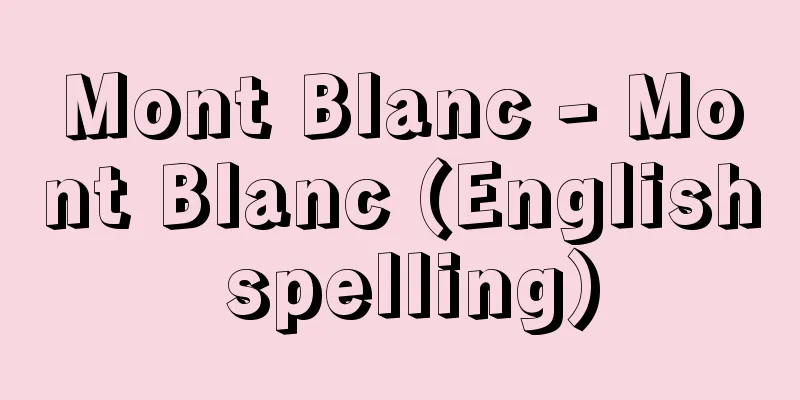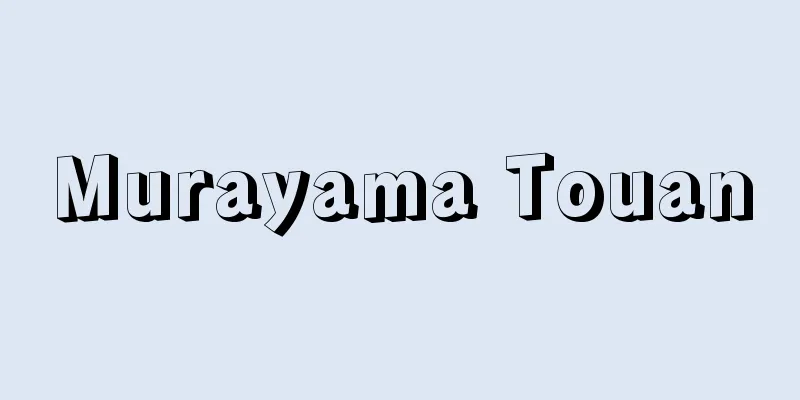Town contact - Town contact

|
During the Edo period, these were laws and regulations issued by the shogunate or each feudal lord to the residents of towns within their territories. In the shogunate territories, they were issued by the magistrates in the direct-controlled cities to the townspeople of the towns they ruled. However, strictly speaking, those issued by the magistrates on their own authority were called "machi-tsuku" (town notices with limited authority), while those issued by the orders of the rōjū or after consulting with the rōjū were called "sōbure" (general notices). As the number of machi-tsuku increased, notices issued at the same time and with the same content every year were also called "jōshiki machi-tsuku". The contents of machi-tsuku became more complex over time, and in the Edo period, various restrictions were put in place, such as the prohibition of fighting and quarrels, and fire safety. In principle, notices were conveyed by gathering representatives of each town (town headmen and monthly events) at the magistrate's office to hear them, but in Edo, from around the 18th century, notices other than important notices were notified by the machi-toshiyori office. When a notice of a notice was issued, each town would make a copy of it, and important ones would be posted in the town guardhouse, or the housekeeper (yamori) would read it out to the townspeople who rented land or shops, to ensure that it was thoroughly followed. In addition, the headman or landlord (town official) who governed the town would issue a joint seal of confirmation, and confirmation was also given to lower-ranking townspeople by the joint seal of the town and the joint seal of the shop. However, townspeople often did not follow these orders, and it was not uncommon for the same notice to be issued on multiple occasions. [Kenichiro Yoshihara] "Edo Town Officials" by Kenichiro Yoshihara (1980, Yoshikawa Kobunkan) Source: Shogakukan Encyclopedia Nipponica About Encyclopedia Nipponica Information | Legend |
|
江戸時代に、幕府や各大名から領内の町の住民に発せられた法令。幕府領では直轄都市に置かれた町奉行(まちぶぎょう)から、支配する町々の町人に出された。ただし、厳密には町奉行が自身の権限で発するものを「町触(手限(てぎり)町触)」とよび、老中の命によるものや老中に伺いのうえで発したものは「惣触(そうぶれ)」とよんで区別した。町触の数が多くなるにつれて、毎年同じ時期や内容の触は「定式(じょうしき)町触」ともよばれている。町触の内容は時代とともに複雑になり、江戸の例をみても喧嘩(けんか)口論の禁止、火の用心など種々の規制が行われていたことがわかる。触の伝達は、町奉行所に各町の代表者(町名主や月行事(がちぎょうじ))を集めて申し聞かせるのが原則であったが、江戸では18世紀ころから重要な触以外は町年寄役所から通知された。触の通知があると、各町ではこれを写し取り、重要なものは自身番屋に張り出したり、家守(やもり)(家主)が地借(じがり)や店借(たながり)の町人に読み聞かせたりして徹底することもあった。また町支配の名主や家主(町役人)から確認の連判を出すこともあり、町中連判や店連判によって下層の町人への確認も行われている。しかし、町人がこれを守らないことも多く、おりにふれて同一の触が出されることも少なくなかった。 [吉原健一郎] 『吉原健一郎著『江戸の町役人』(1980・吉川弘文館)』 出典 小学館 日本大百科全書(ニッポニカ)日本大百科全書(ニッポニカ)について 情報 | 凡例 |
<<: Townhouse (machiya) - Machiya
>>: Town magistrate - Machibugyo
Recommend
Kirkbride, D.
…From the late 1940s to the 1960s, the Hassna sit...
Huerta, V.
…The Ayala Plan was announced by the Zapata facti...
Encyclical (English spelling) (Latin)
The term refers to the form of letter in which th...
Earthworm (earthworm) - Earthworm (English spelling)
A general term for annelids in the class Oligochae...
Ambix
...However, the technology of distillation was di...
Elf - elf (English spelling) elf English
Supernatural spirits or fairies. Their existence ...
Ernst Herzfeld
1879‐1948 German archaeologist and orientalist. Bo...
Saccharin
A compound known as a synthetic sweetener, it was...
Korankei
The valley of the Tomoe River, a tributary of the...
Time adjustment - Jicho
A fixed form of poetry unique to Korea. It consis...
Ainsworth, WH - Ainsworth
…He gained notoriety as a burglar, and whenever h...
Aquamarine - Aquamarine (English spelling)
The name of a type of beryl that is sea-blue and ...
Aldo Mieli
1879‐1950 A historian of science born in Italy, he...
A pledge - Kishomon
A kisho is a vow made to the gods and Buddhas, in...
Notsuhara [town] - Notsuhara
A former town in Oita County, central Oita Prefect...









